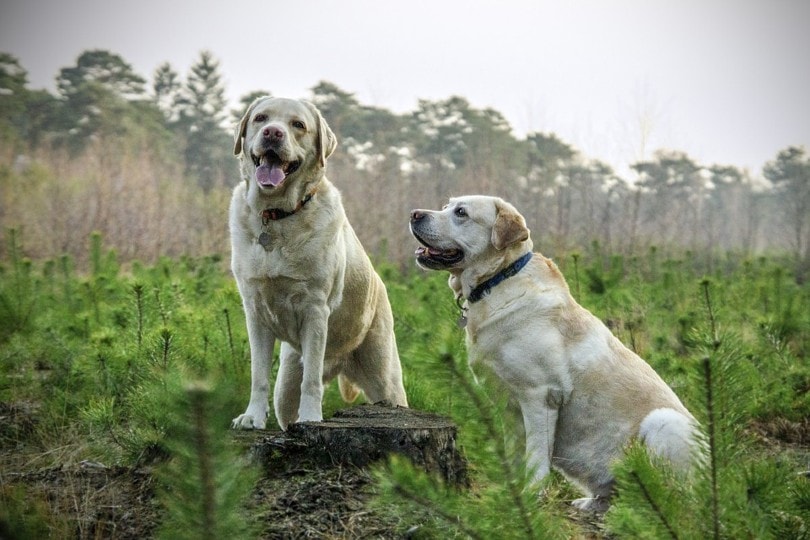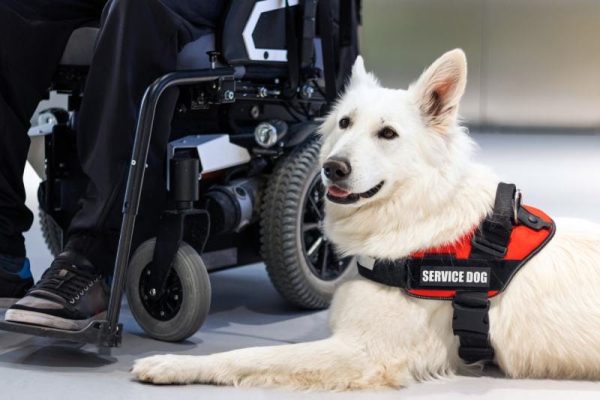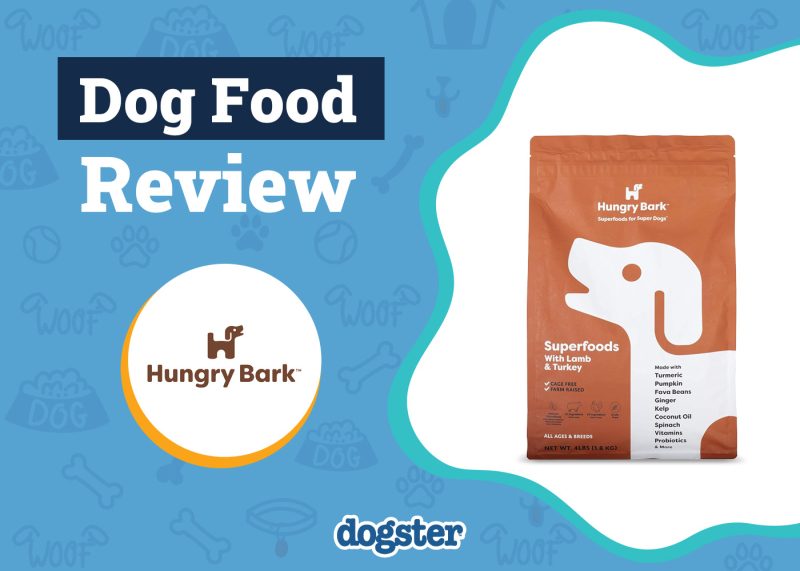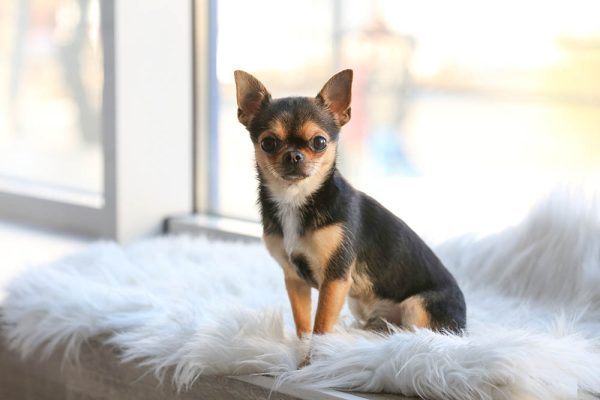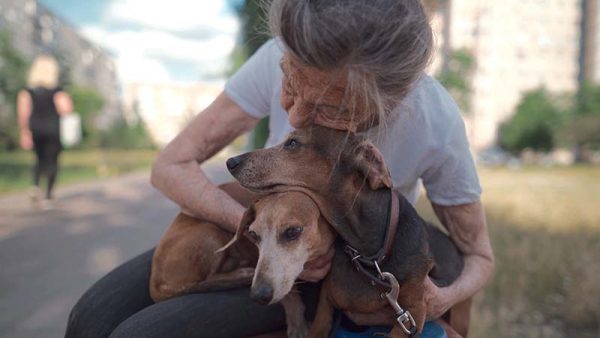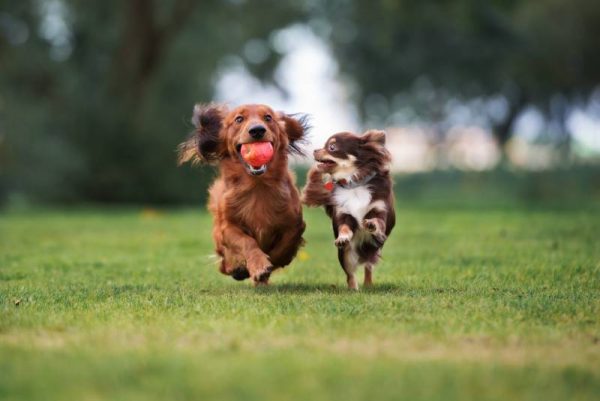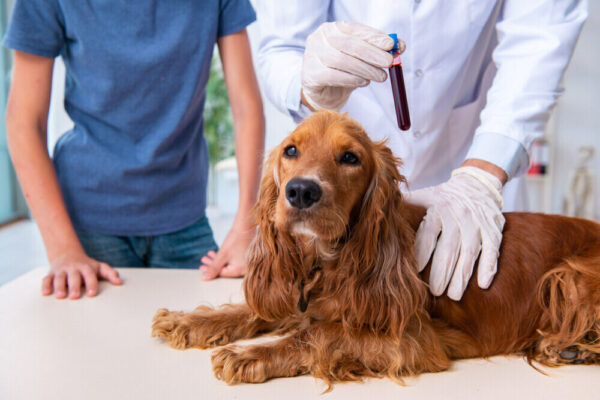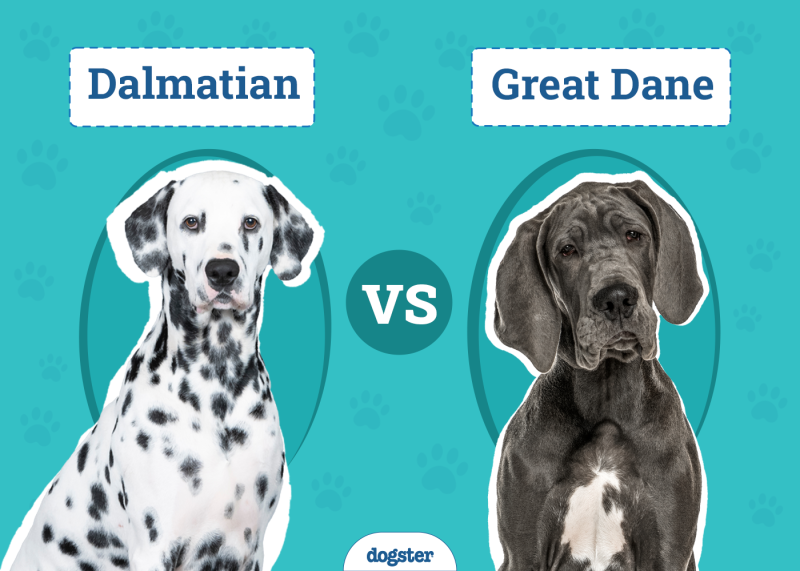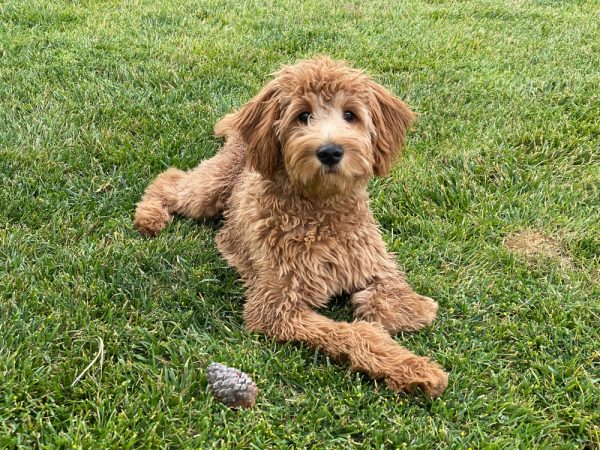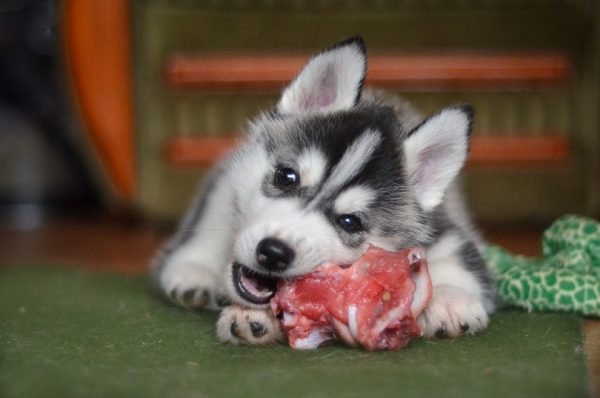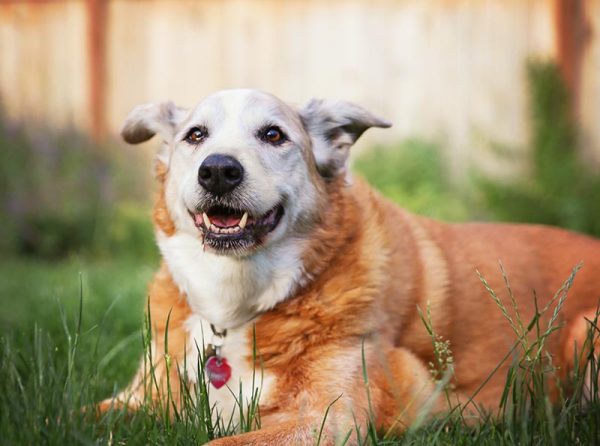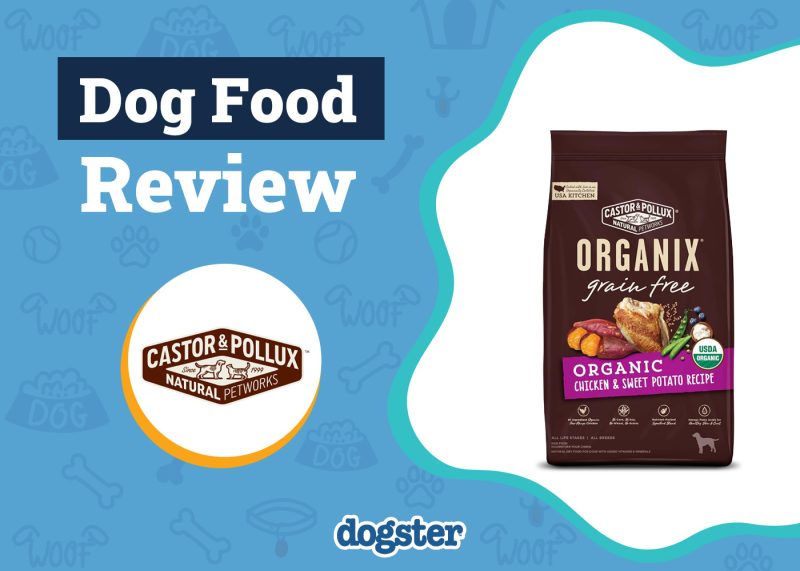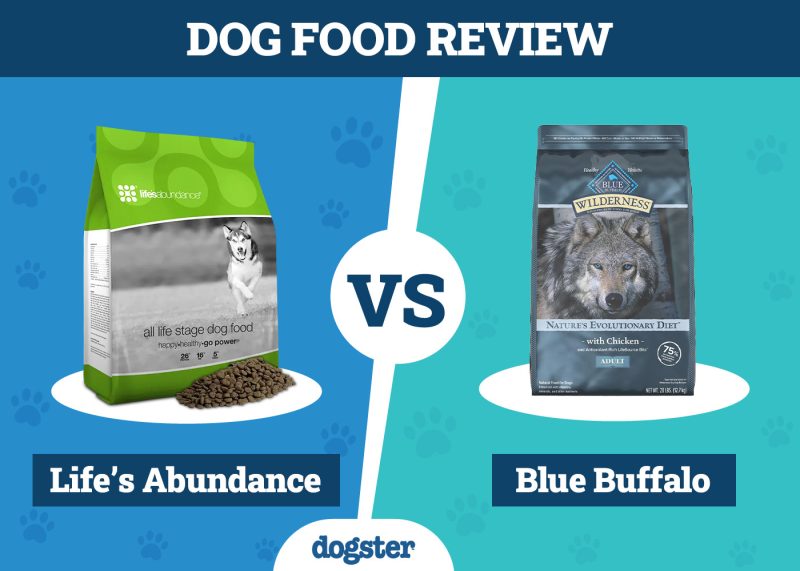In this article
View 2 More +Female dogs typically go through a heat cycle twice a year, during which time, they can mate and conceive babies. The first part of the heat cycle is referred to as the proestrus stage, while the second part of the cycle is referred to as the estrus stage.1 Both trigger different physical and behavioral changes that can help owners decipher just where their dogs are in their cycles. We put together this comprehensive guide to help you understand all the behaviors that your dog may display. Here is what you need to know.

The Proestrus Stage
This is the stage when a female dog is preparing to mate. They are not yet fertile and are not quite receptive to mating, but their hormones are starting to change and prepare the body for conception. Here are a few of the behavioral and physical changes that your dog may display during the proestrus stage.
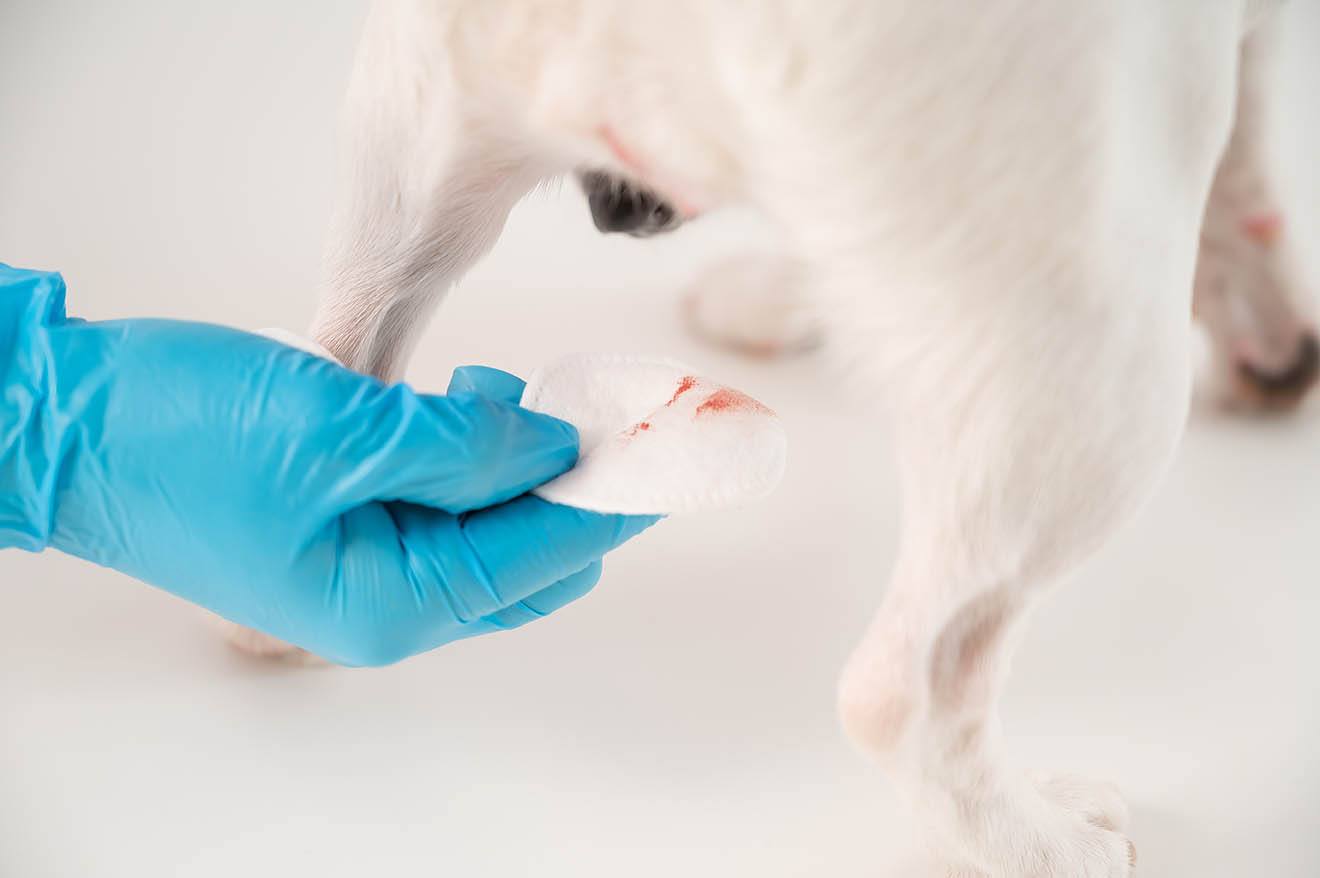
- Swollen Vulva. As blood starts to circulate and the vulva becomes ready for penetration, it will begin swelling up and turning pink or red. Your dog may begin to lick the area more often, and she may seem a little irritated by the situation.
- Bloody Discharge. While not a behavior, bloody discharge and a red tinge in urine are telltale signs of your dog being in the proestrus stage. Most dogs do not bleed enough to leave markings around the house, though large breeds might need diapers if they experience excessive discharge.
- Clinginess. Dogs in the proestrus phase may become clingy when spending time around their human companions or other dogs that they trust. They may want to snuggle more often or just stay by your side, whether you are washing dishes in the kitchen or enjoying an afternoon in the backyard.
- Humping. The urge to hump other dogs or objects can be seen in females going through the proestrus stage. It does not matter what the sex of the other dog is or whether it is a human’s leg or a pillow that has fallen off the couch. The urge to hump can last for just 1 day or throughout the entire proestrus stage.
- Restlessness. You might notice that your dog becomes restless or fidgety due to hormone changes during her heat cycle, especially during the proestrus stage. Your dog may not settle down as easily at night, and she may pace during the day until let outside to release pent-up energy. She may even act nervous when around groups of people or other dogs.

The Estrus Stage
The estrus stage happens when a female dog is ready for mating and conception. Behavior tends to change at this point for most dogs. No longer will your dog be nervous, and she will not continue trying to hump other animals, people, and things like she did during the proestrus stage. Here are the behaviors that you can expect from your dog during the estrus stage.
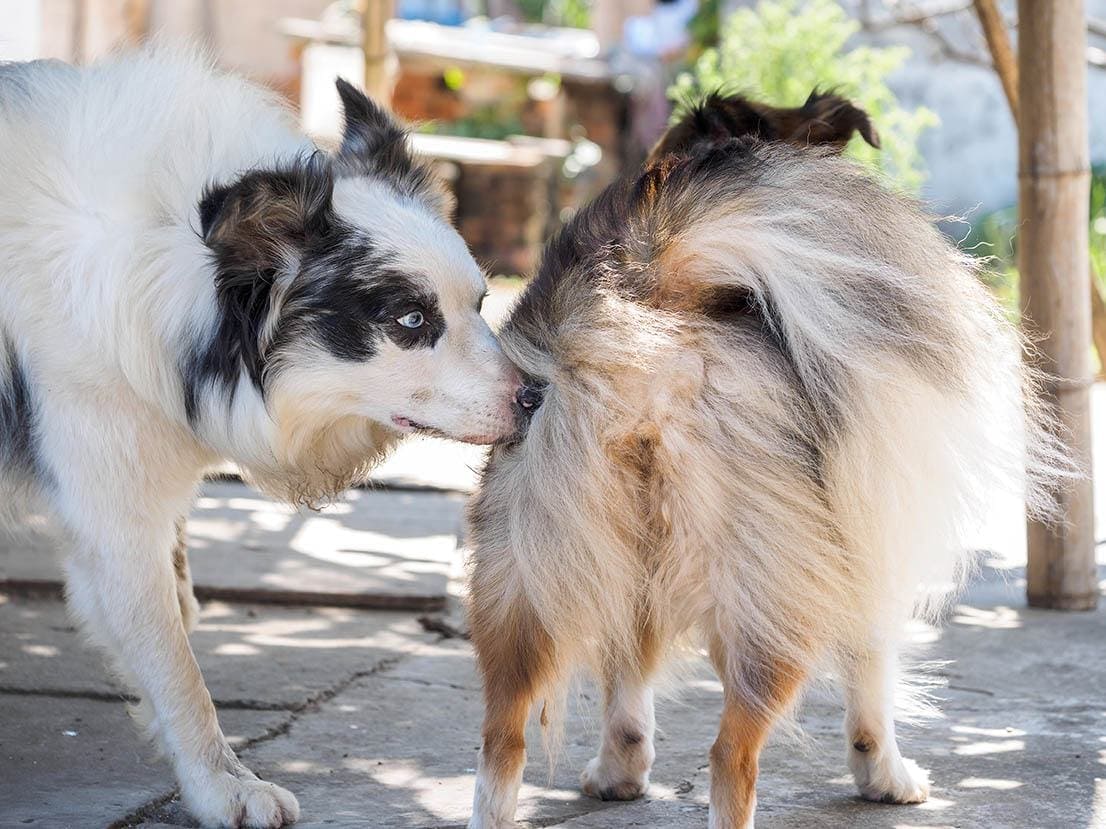
- Frequent Urination. Dogs tend to urinate more often than usual during the proestrus and estrus stages. Be prepared to take your dog out or let her into the yard several times throughout the day and a couple of times during the night. It may be necessary to put potty pads out if you cannot take her out throughout the day.
- Aggressiveness Toward Other Females. Dogs in heat, especially during the estrous stage, do not want to be around “the competition,” which is any other female dog. If you have more than one female dog, they may squabble during this stage and might need to be separated until the stage ends.
- Extra Attention Toward Males. The estrous stage happens when a dog is ready to mate and make babies, so do not be surprised if your dog starts stalking any males that she makes contact with and then tries to get their attention. Your dog may rub up against male dogs, show her behind, or turn her tail to the side as an invitation to mate.

Common Behaviors of a Female Dog in Heat
As mentioned before female dogs exhibit various behaviors during their heat cycle, including two main stages: proestrus (mating preparation) and estrus (receptive to mating). A female dog’s heat cycle is a time of significant hormonal changes affecting her behavior. Let’s break down the specific behavioral patterns in the different stages:
- restlessness
- frequent urination
- increased affection
- humping
During the proestrus stage: Female dogs will not be receptive to mating, but as hormonal changes are happening, they might act friendly towards male dogs, eat more or less than usual, and show signs like a swollen vulva, bloody vaginal discharge, and licking their genitals.
During the estrus stage: They become more receptive to male dogs and actively seek attention from them, display tail positioning and playfulness as part of their courtship effort, and show reduced aggression toward males while aggression toward females may increase.
In recognizing these signs and changes in behavior, pet parents can see to their dog’s health and well-being and prevent unwanted pregnancy, by supervising interactions, providing extra attention, and maintaining hygiene.

Closing Thoughts
Now that you know what kinds of behaviors to expect from your dog during the proestrus and estrus stages of her heat cycle, you can keep an eye out for the behaviors to determine whether she is in her cycle at any given time. Signs of these behaviors can help you avoid an unwanted pregnancy during all heat cycles and plan a wanted mating session when the time comes.
- Related story: Pre-breeding Tests to Get for Your Dog
Featured Photo Credit: Ryniu1234, Pixabay

